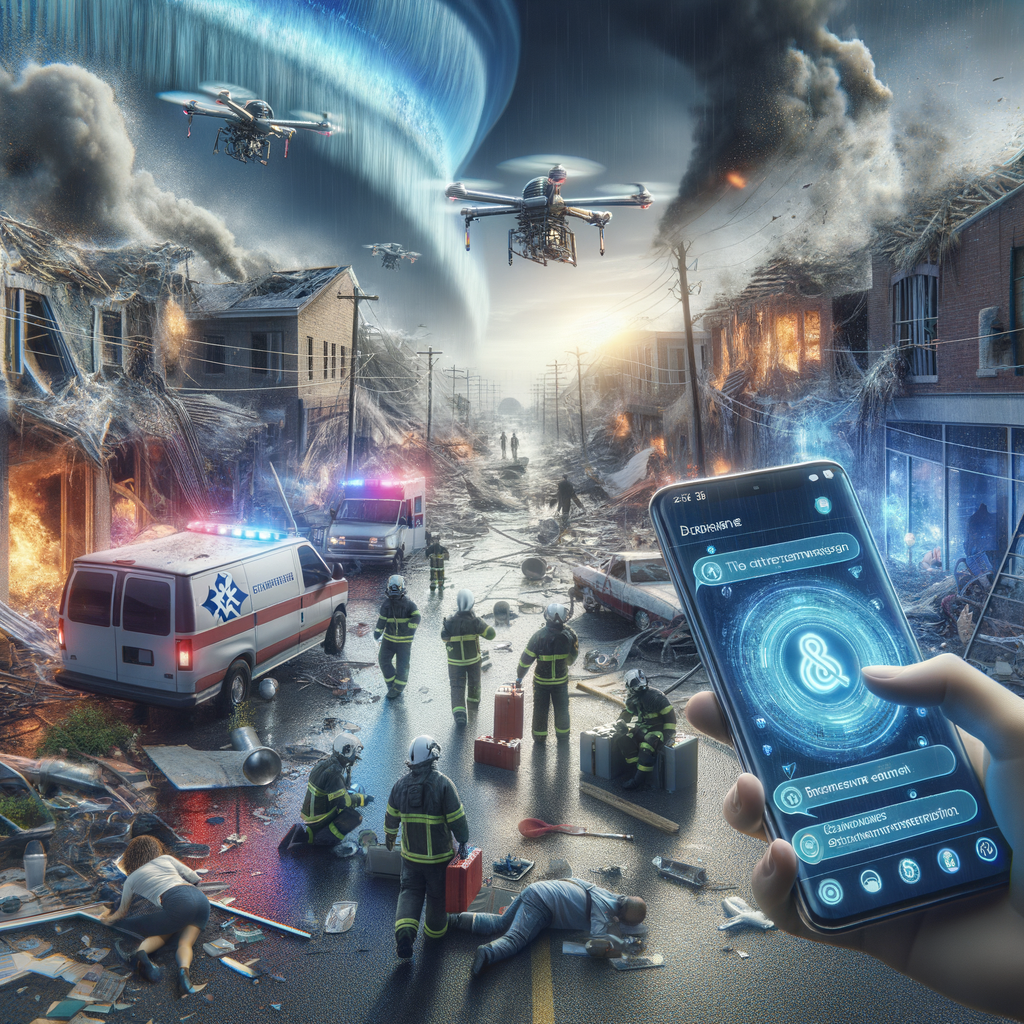Integrating AI Phone Calls into Disaster Recovery Strategies
Integrating AI Phone Calls into Disaster Recovery Strategies

The Role of AI Phone Calls in Disaster Recovery Plans
Disasters can strike at any moment. Whether it’s a natural calamity like a hurricane or an IT outage, having a solid disaster recovery plan is crucial. But have you considered how AI phone calls can revolutionize disaster response? Let’s dive into the world where technology meets preparedness!
Understanding Disaster Recovery Plans
Disaster recovery plans (DRP) are comprehensive strategies aimed at ensuring business continuity when faced with disruptions. They cover everything from data backups to communication protocols. But at the heart of every effective plan is a robust communication strategy, and that’s where AI phone calls come into play.
What Are AI Phone Calls?
AI phone calls are automated calls made using artificial intelligence. These systems use natural language processing and machine learning to carry out conversations. Imagine having a virtual assistant that can interact, obtain information, and provide critical updates without human intervention!
Why Communication Is Key in Disaster Situations
During disasters, clear communication can be the difference between chaos and control. Whether notifying employees, reaching out to clients, or following up with emergency services, timely and effective communication is critical. This is where AI can really shine!
The Advantages of Using AI Phone Calls in Disaster Recovery
1. Speed and Efficiency
AI phone calls can reach thousands of people in a matter of minutes. Instead of manning phone lines or sending countless emails, an AI system can deliver critical messages and alerts instantly. Think of it like a fire alarm, but for your communication strategy!
2. Redundancy in Communication
If one channel fails (like email outages), AI phone calls act as a backup. This ensures that your communication lines remain open. After all, if you can’t reach your team, how can you effectively mobilize a recovery effort?
3. Personalized Messaging
AI can customize messages based on different factors, such as location or department. This ensures that the right information is delivered to the right people. Imagine receiving a call saying, “Hey, John! Your department will report to building B for evacuation.” How comforting is that?
4. Data Collection and Insights
AI phone systems can also gather valuable information during calls. They can take polls, assess readiness levels, or even collect resources needed. This data can be transformed into insights that could influence future disaster recovery plans.
Integrating AI Calls Into Your Disaster Recovery Plan
1. Assess Your Needs
What do you need from an AI phone system? Assess the scale, capabilities, and functionalities that suit your business needs. It’s like shopping for the right tool; the perfect fit makes all the difference!
2. Choose the Right Technology
Not all AI phone systems are created equal. Evaluate options that offer features such as multi-language support, emergency alerts, and advanced analytics. Look for vendors with strong reputations in the industry.
3. Combine AI with Human Support
AI is incredible, but human oversight is essential. Train your team to work alongside AI systems and understand when to intervene. It’s like pairing your smartphone with that trusty old calculator—they complement each other!
4. Regular Testing and Updates
Your DRP won’t be effective if it’s stagnant. Regularly test and update both your disaster recovery plan and AI phone systems. A plan that adapts to changing circumstances is a plan that works!
Challenges and Limitations of AI Phone Calls
1. Accuracy of Information
AI systems rely on data. If the input data is flawed, the output can be misleading. Always ensure that the information fed into the system is accurate and up-to-date.
2. Acceptance and Trust
Getting employees to trust AI systems can be a challenge. Training sessions and transparency about how these systems work can help build confidence. After all, would you trust a floating robot if you didn’t understand its purpose?
3. Technical Failures
Technology can fail. Be prepared with a backup plan should your AI communications go down. It’s similar to carrying a spare tire; better safe than sorry!
Real-World Examples of AI in Disaster Recovery
Case Study 1: Hurricane Response
In the wake of Hurricane Harvey, a large community utilized AI phone calls to rapidly disseminate evacuation orders and resources. The system managed to reach over 10,000 residents within an hour, significantly lowering chaos. Their feedback? It felt like having a friend looking out for you!
Case Study 2: IT Outage Recovery
A major tech company faced a severe outage that affected operations across multiple locations. They activated an AI phone system to inform employees about the situation, troubleshooting procedures, and when they could return to work. The clarity and speed reassured everyone during a stressful time.
Conclusion
AI phone calls are becoming integral to effective disaster recovery plans. They offer speed, efficiency, personalization, and invaluable data insights. While there are challenges, the benefits outweigh the drawbacks. As we plunge deeper into the digital age, leveraging AI for communication in crisis situations can help businesses not only survive but thrive. So why not embrace this technology today?
FAQs
1. How can AI phone calls benefit my business?
AI phone calls enhance communication efficiency, provide personalized alerts, and collect data insights that are crucial during disaster recovery.
2. Are AI phone systems expensive to implement?
Costs can vary widely based on features and scale, but many businesses find the investment worthwhile for the level of resilience they provide.
3. Can AI phone calls replace human communication?
No, they complement human communication. While AI can handle large volumes of information, human oversight is necessary for nuanced situations.
4. How often should I test my AI phone system?
Regular testing is essential; aim for at least once every six months or after any significant updates to your disaster recovery plan.
5. What should I do if my AI phone system fails?
Always have a backup communication plan in place, such as manual call trees or SMS alerts to ensure the message gets through.

